In the world of automobiles, few things trigger as much dread and uncertainty as the sudden illumination of the check engine light (CEL) on your dashboard. It’s a small, often amber-colored symbol—but its implications can range from minor to catastrophic.
For some drivers, it signals a loose gas cap; for others, it heralds thousands of dollars in repairs, long waits at the shop, or repeated diagnostic visits that never seem to resolve the issue.
The check engine light represents the invisible side of modern driving: the intricate network of sensors, software, and mechanical parts that all must function in harmony to keep a vehicle running smoothly and within regulatory emissions limits.
In the early days of motoring, cars were simpler machines. When something went wrong, it was usually mechanical—and usually obvious. Today, however, even economy cars are equipped with dozens of electronic sensors and modules, each of which feeds data to the vehicle’s engine control unit (ECU).
This digital nervous system constantly monitors performance metrics such as air-fuel ratios, spark timing, emissions levels, engine load, and more. If anything drifts out of the expected range—even for a moment—the ECU may respond by turning on the check engine light. In theory, this makes vehicles safer, cleaner, and easier to maintain. In practice, it can be a source of unrelenting frustration.
Not all vehicles are created equal when it comes to CEL behavior. Some automakers engineer their systems with reliability in mind, aiming to reduce the likelihood of false alarms and design flaws that can lead to constant warnings.
Others—often in pursuit of performance, cutting-edge features, or lower manufacturing costs—end up producing vehicles where the CEL seems to have a mind of its own. That’s where this article comes in.
We’re diving into a detailed analysis of ten vehicles, split evenly into two categories. First, we’ll look at five cars that have the fewest average check engine light issues. These are the unsung heroes of reliability: dependable, consistent, and often underrated. They keep things simple, use well-tested parts, and prioritize stability over flash.
If you’re looking for peace of mind and low maintenance costs, these are the cars that make your life easier—rarely flashing that dreaded light on your dashboard.
Next, we’ll examine five cars that seem to constantly throw CELs, sometimes without just cause. These are the cars that can test even the most patient owner. Whether due to overly sensitive sensors, complex powertrains, poor-quality parts, or aging electronics, these vehicles have a track record of triggering frequent engine warnings.
While some of these cars may offer thrilling performance or stylish design, they often come at the cost of mechanical headaches and unreliable electronics that drain your time and wallet.
Importantly, this article doesn’t rely on any single anecdote, forum post, or isolated complaint. Instead, it’s based on widespread patterns seen across consumer reports, technician observations, and long-term ownership experiences.
We aren’t aiming to shame any particular manufacturer, nor are we blindly praising others. The goal is simple: to help you, the reader, understand which vehicles are likely to give you peace of mind—and which ones may require a permanent OBD-II scanner in the glove box.
Whether you’re shopping for a new car, dealing with your current one, or just curious about which makes and models are saints or sinners in the world of engine diagnostics, this guide is built to inform and enlighten.
It’s not just about avoiding that annoying amber light—it’s about understanding the deeper mechanical philosophies that lead to reliable (or unreliable) vehicles. Behind every blinking dashboard symbol, there’s a story of design choices, engineering trade-offs, and long-term consequences.
Also Read: 5 Trucks With Best OEM Navigation Maps And 5 Needing Updates
Five Cars with the Fewest Average Check-Engine Lights
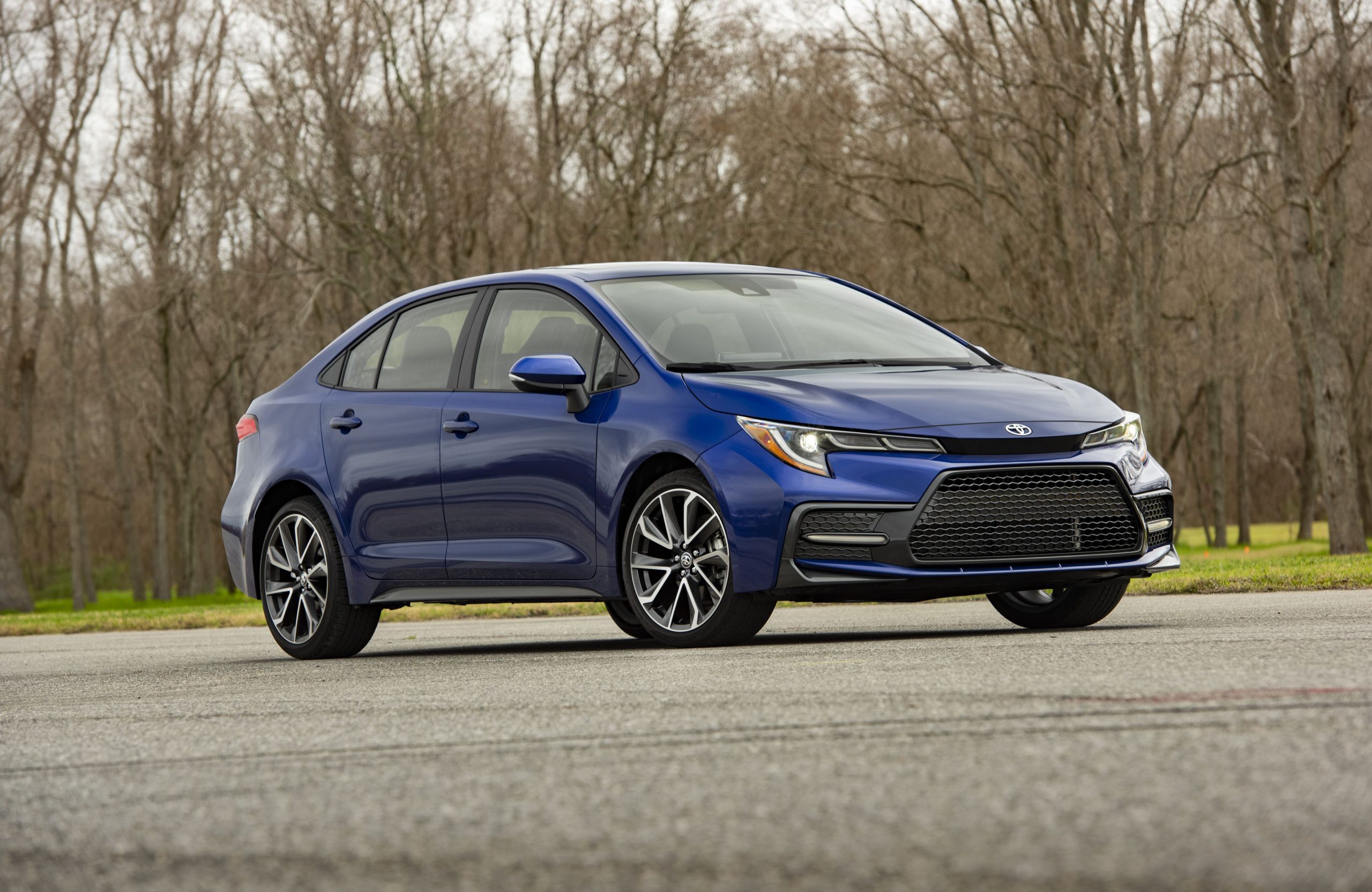
1. Toyota Corolla (2010–Present)
The Toyota Corolla has earned a nearly mythic status in the automotive world for one simple reason: it just works. The Corolla’s unmatched track record for reliability is a result of decades of iterative design, conservative engineering, and obsessive quality control.
Whether you’re looking at the 2010 model or something more recent, the Corolla continues to demonstrate minimal issues with the check engine light (CEL). Owners across the globe report driving for years without so much as a flicker of warning on the dash, and this consistency has become a key reason why the Corolla remains one of the most popular vehicles on Earth.
One of the core reasons behind the Corolla’s low CEL frequency is its non-turbocharged, naturally aspirated engine. Toyota engineers have mastered the art of simplicity with this powertrain, sticking with the tried-and-true inline-four engine format for most versions.
The lack of a turbocharger not only reduces stress on the engine but also eliminates a whole class of potential failure points, including turbo boost sensors, intercoolers, and wastegate valves—all frequent culprits in CEL events for turbocharged cars. This simplicity translates into far fewer headaches for the average owner.
Beyond the engine, Toyota’s rigorous testing and parts integration play a critical role. The Corolla is built using an ecosystem of components that have been vetted for compatibility and long-term durability.
Toyota’s design philosophy favors robustness over cutting-edge experimentation, which means the systems in the Corolla—from emissions controls to ignition coils—are refined, proven technologies. The end result is a vehicle where sensor miscommunication is rare, reducing false alarms that might trigger a check engine light.
Maintenance is another area where the Corolla shines. Because of the car’s global popularity, routine servicing is widely available, and mechanics are deeply familiar with its systems.
Most CEL triggers—such as oxygen sensor malfunctions, MAF sensor dirtiness, or EVAP leaks—can be prevented with basic scheduled maintenance. And in the rare case that a CEL does illuminate, diagnosing the issue is often fast, accurate, and inexpensive due to the model’s mechanical transparency and simplicity.
Finally, the Corolla’s target demographic—drivers looking for long-term value and minimal fuss—means these cars are generally not abused or heavily modified. This leads to fewer extreme operating conditions, less wear on engine components, and ultimately a more stable operating environment.
The cumulative effect of smart engineering, conservative technology, and responsible ownership makes the Toyota Corolla a car that genuinely lives up to its reputation: unflashy, but incredibly trustworthy, and rarely ever calling for attention via a check engine light.
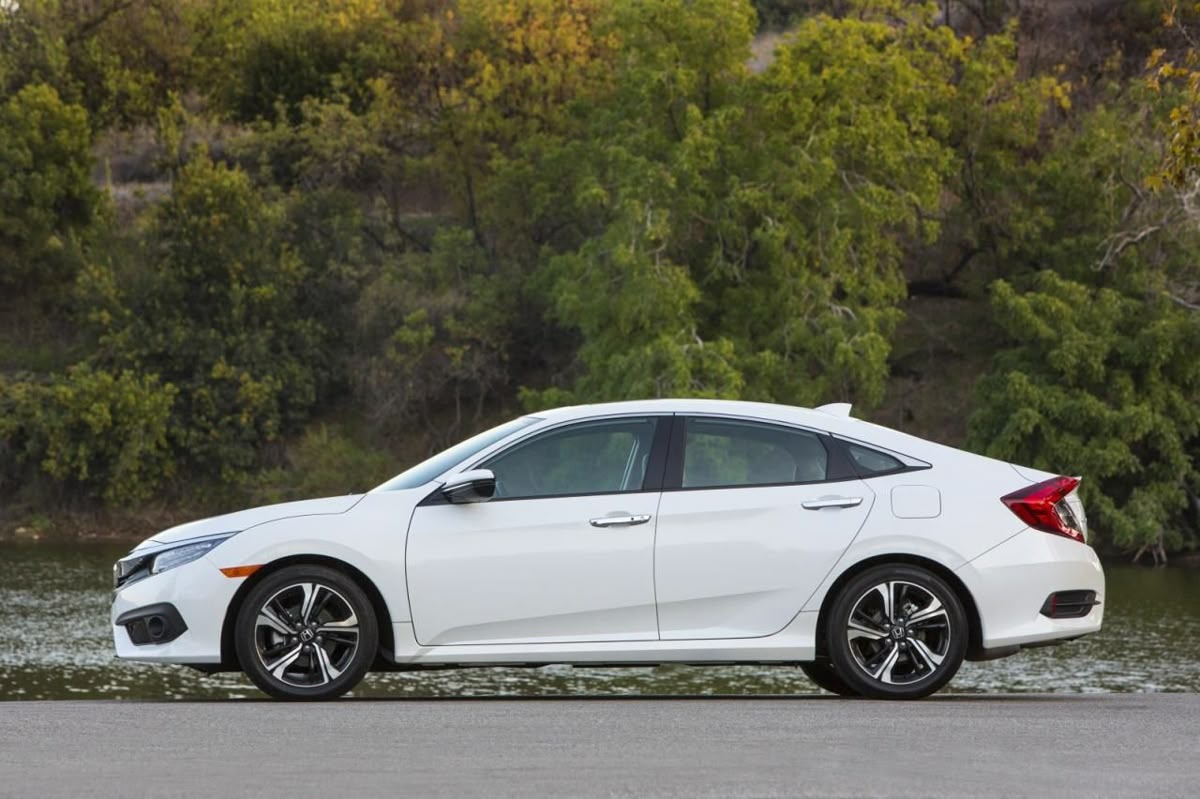
2. Honda Civic (2012–2021)
The Honda Civic stands tall as one of the most reliable cars in its class, especially during the 2012–2021 production years. Across these generations, Honda managed to balance affordability, efficiency, and performance without sacrificing reliability.
A big part of this success lies in how rarely the check engine light activates on this model. Drivers often report going tens of thousands of miles without any unexpected warning lights, which speaks volumes about Honda’s mastery of both mechanical and electronic systems.
One key to the Civic’s reliability is its conservative yet well-executed powertrain engineering. The base engines in these models are non-turbocharged four-cylinders that rely on port fuel injection—technologies that Honda has refined over decades.
These systems are inherently less complex than newer direct-injection or forced-induction engines, which can suffer from carbon buildup, oil dilution, or heat stress. By sticking with a setup that prioritizes reliability over edge-case performance, Honda dramatically reduced the chance of sensor faults and inconsistent engine behavior that could trigger a CEL.
Equally important is the precision with which Honda integrates its engine control modules (ECUs). Many CEL issues in other cars stem from miscommunication between various sensors—oxygen, MAF, throttle position, etc.—but Honda’s tightly controlled internal development avoids such pitfalls.
Because Honda produces many of its own parts rather than sourcing from various suppliers, compatibility and calibration are nearly flawless. The electronics work harmoniously, minimizing error codes or ambiguous sensor readings that could activate the CEL prematurely.
The Civic is also designed to be user- and mechanic-friendly, which helps catch potential issues before they become major problems. The layout of the engine bay is clear and uncluttered, making it easy for technicians to spot problems during routine inspections.
Common CEL causes such as worn spark plugs, cracked ignition coils, or faulty EGR valves are easily accessed and affordable to fix—further preventing more serious complications down the line. This design philosophy supports a preventive maintenance culture that pays dividends in the long-term health of the vehicle.
Another advantage is the Civic’s owner base. These cars are commonly used for commuting, student transportation, and family errands—not street racing or heavy towing. The Civic’s moderate use-case means fewer extreme operating conditions, less wear and tear, and ultimately less strain on the sensors and systems that trigger CELs.
All told, the Civic doesn’t just have a great reputation—it earns it, every day, with a reliability profile that keeps the check engine light dark and the owner’s wallet full.
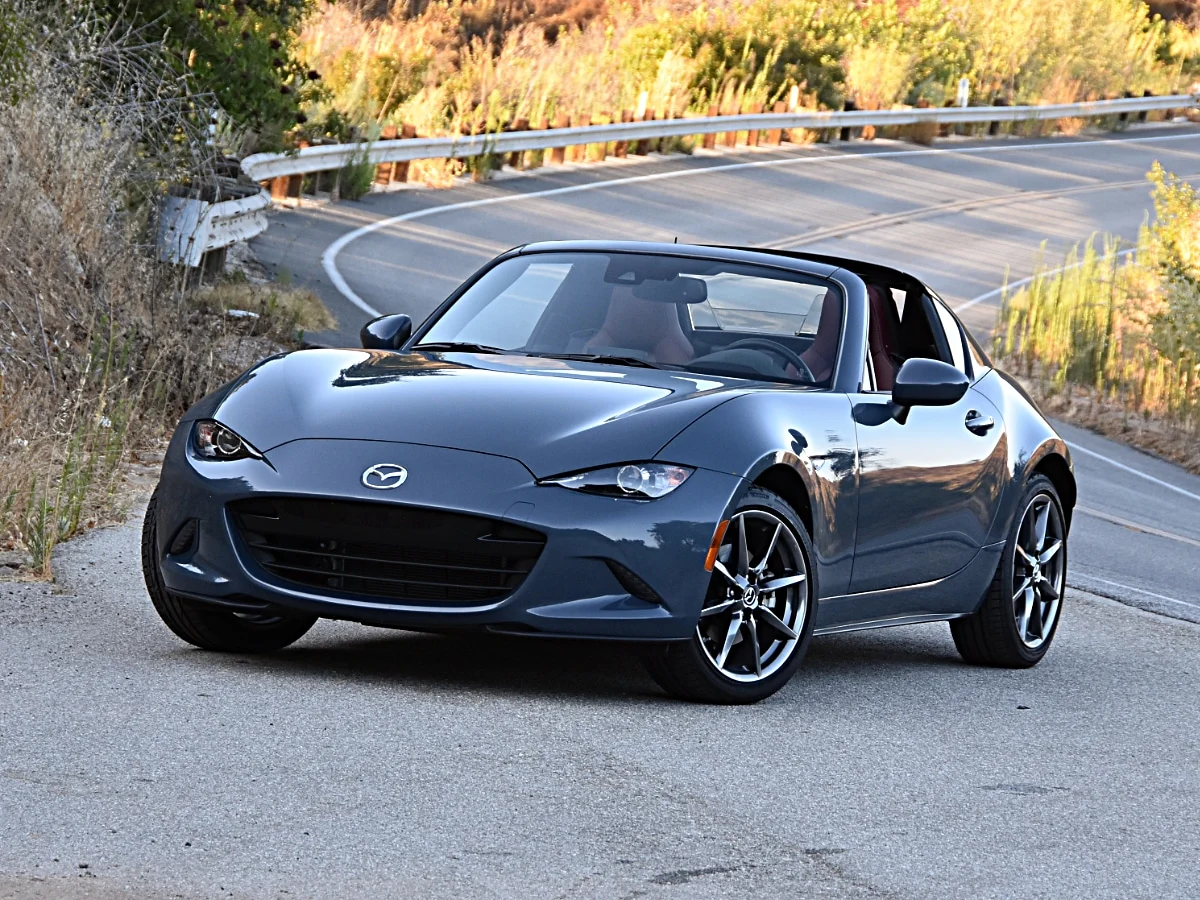
3. Mazda MX-5 Miata (2006–2015)
The Mazda MX-5 Miata, specifically in its third-generation NC form (2006–2015), is one of the few sports cars that prioritizes fun without sacrificing reliability. While its light weight and responsive handling steal the spotlight, what often goes unnoticed is how rarely the check engine light makes an appearance.
It may be a weekend toy for many, but the Miata proves that excitement doesn’t need to come at the cost of maintenance nightmares.
At the heart of the NC Miata’s reliability is its naturally aspirated 2.0-liter inline-four engine, which is devoid of the complexity that plagues many modern sports cars. There’s no turbocharging, no hybrid system, no exotic tech under the hood—just pure mechanical honesty.
This minimalism means there are fewer points of failure and a much lower likelihood of the kinds of pressure-related issues that trigger CELs in turbo engines. Everything from the ignition timing to the fuel mapping is tuned conservatively, reducing stress on the internals and extending component life.
Another reason for the Miata’s CEL resilience is Mazda’s focus on balance and harmony across the drivetrain. The NC Miata’s engine, transmission, and ECU are designed as a matched set, not cobbled together from disparate systems.
That kind of synergy is rare, especially in sports cars. Sensors are placed logically and operate within ideal thermal zones, minimizing heat-related failures. The catalytic converter, which is a common source of CEL complaints in other cars, is also well-positioned and reliable in the Miata.
It’s also worth noting how owner behavior positively influences the Miata’s reliability. Despite its sporty nature, most Miata owners are passionate about upkeep. These cars often get pampered with premium oil, clean air filters, and regular maintenance.
It’s not uncommon to find Miatas with pristine service records and well-documented mechanical history. That diligence helps catch small issues early and keeps components like O2 sensors, spark plugs, and coil packs in peak condition—avoiding CELs down the line.
Lastly, Mazda engineered the NC Miata to be incredibly easy to service. The car was built with DIY mechanics in mind, which means that when issues do occur, they’re easy to spot and cheap to fix.
This combination of thoughtful design, enthusiast-grade build quality, and mechanical simplicity results in a car that’s not only thrilling to drive but impressively immune to check engine light drama. The Miata proves that you can have your cake—manual gearbox, rear-wheel drive, rev-happy engine—and eat it too.
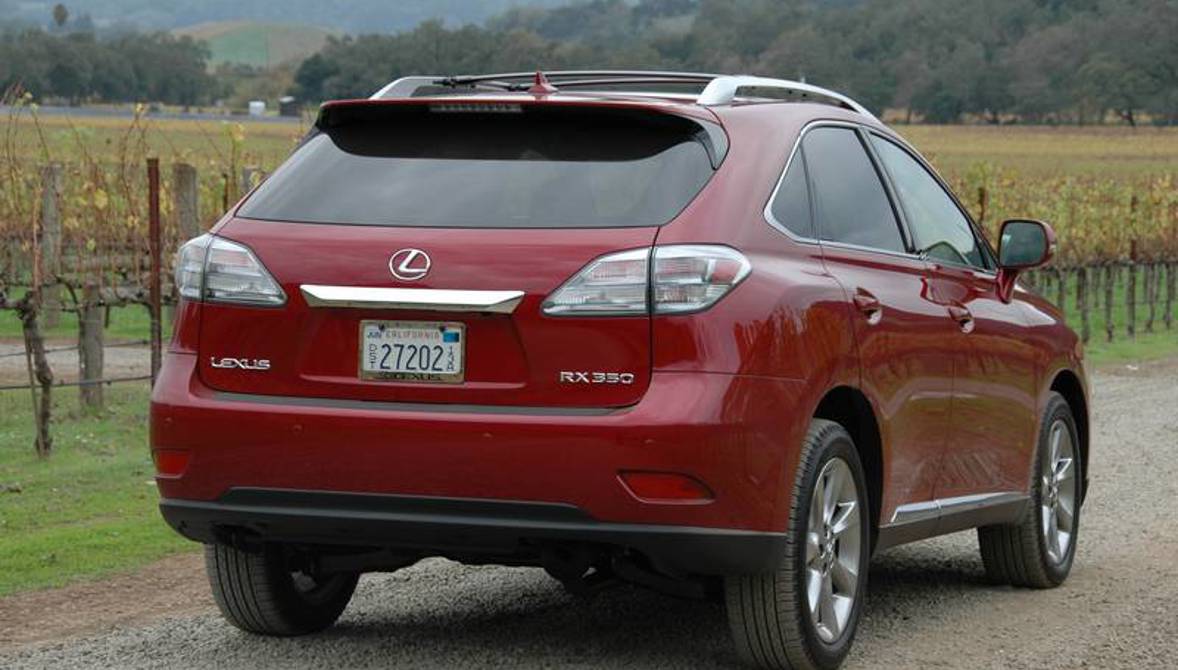
4. Lexus RX350 (2009–2019)
The Lexus RX350 is often overshadowed by more performance-focused or design-heavy SUVs, but among mechanics and long-term owners, it’s known for something far more valuable: reliability.
This mid-size luxury crossover delivers smooth power, exceptional comfort, and—crucially—a dashboard that rarely lights up with engine warnings. From 2009 to 2019, the RX350 quietly established itself as one of the most dependable vehicles in its class.
Central to this reliability is its 3.5-liter V6 engine, one of the best Toyota has ever built. Known internally as the 2GR-FE and its later variants, this engine is a masterpiece of balance, blending efficiency and power without excessive complexity.
Unlike some German luxury rivals that rely heavily on turbos or twin-turbos, Lexus opted for natural aspiration, minimizing the number of systems that could fail or misreport to the ECU. The result? Fewer reasons for a CEL to appear in the first place.
The RX350 also benefits from Lexus’s obsession with quality control. Every sensor, wire harness, and module is tested under rigorous conditions before it makes it into the car.
This attention to detail drastically reduces the rate of false positives and erratic behavior that often lead to unnecessary CEL events in other vehicles. From the throttle position sensor to the camshaft actuators, every component is designed to last the life of the vehicle with minimal variance in performance.
An additional factor is the stability of the RX350’s emissions control systems. Unlike more aggressively tuned engines that risk throwing off the air-fuel balance, the RX’s conservative ECU programming maintains consistency, helping the oxygen sensors and catalytic converters stay within optimal operating ranges.
This stability ensures that the CEL isn’t tripped by minor fluctuations in exhaust gas readings or fuel trim data—a common problem in other high-mileage vehicles.
Finally, many RX350 owners are meticulous about upkeep. These vehicles are often bought by professionals and families looking for long-term reliability rather than performance thrills. That translates to timely oil changes, premium fuel usage, and general respect for the machine.
Combined with Lexus’s outstanding dealership network and service options, this ownership profile helps preserve the integrity of the systems that commonly trigger CELs. In the long term, the RX350 emerges as a vehicle that quietly does its job, with no need for dashboard drama.

5. Subaru Outback (2015–2019)
While Subaru isn’t typically the first name mentioned in discussions of bulletproof reliability, the 2015–2019 Subaru Outback is a notable exception, particularly when resisting the dreaded check engine light.
During this generation, Subaru made significant refinements to its flagship wagon-SUV crossover, improving both the mechanical robustness and the electronic systems in a way that yielded a quieter dashboard and fewer surprise visits to the mechanic.
A key strength of the Outback in this era is its 2.5-liter naturally aspirated boxer engine. Subaru created a powertrain that is far more predictable and reliable by avoiding the added complexity of turbochargers and high-pressure fuel systems.
Turbocharged Subaru models—particularly WRX trims—are often plagued by CELs due to boost leaks, over-boost codes, or faulty wastegate solenoids. None of these issues are present in the base Outback, which benefits from its simpler design and lower operating pressures.
Subaru also improved the reliability of its emissions and EVAP systems during this generation, addressing a long-standing issue that had haunted previous models.
Earlier Subarus were known to trip CELs due to fuel cap leaks, EVAP sensor faults, and charcoal canister failures. The 2015–2019 models feature more robust sealing, improved sensor durability, and more precise fuel system management. As a result, the frequency of CELs for small EVAP faults was significantly reduced.
Another area of improvement came in the electrical systems. Subaru enhanced the wiring harness design and consolidated several control modules to prevent redundant signals or cross-talk between systems.
This reduced the chance of communication errors between the ECU and subsystems like the transmission, climate control, and ignition—areas where CELs often originate in older or more electronically fragmented vehicles.
Lastly, the Outback’s user base works in its favor. These vehicles are often driven by outdoorsy, family-focused owners who value reliability over racing.
They’re typically maintained well and driven with care, which minimizes abuse and premature wear. Combine that with Subaru’s improved engineering during this window, and you get an Outback that not only takes you into the wilderness but rarely signals distress while doing it.
Five Cars That Constantly Throw Check Engine Lights (CELs)
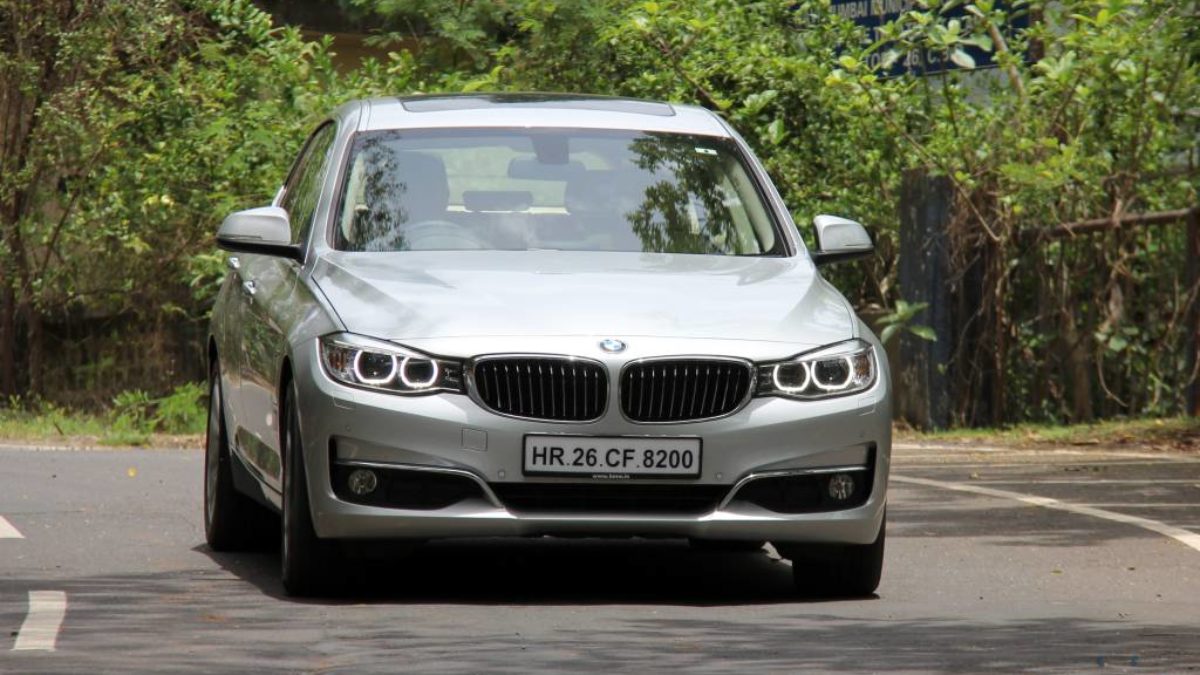
1. BMW 3 Series (2006–2013, E90 Generation)
The BMW 3 Series, particularly the E90 generation (2006–2013), is a dream to drive but a bit of a nightmare to maintain, especially when it comes to check engine lights.
Enthusiasts love the sharp handling and smooth engines, but anyone who’s owned one past 80,000 miles knows that CELs are almost a built-in feature. Despite its luxurious appeal, this era of the 3 Series is plagued with a laundry list of common engine-related faults, many of which are chronic and difficult to permanently fix.
One of the biggest culprits is the High-Pressure Fuel Pump (HPFP), particularly in the turbocharged N54 and N55 engines. These pumps are notorious for failing prematurely, and when they do, they can trigger all sorts of misfire codes and limp mode conditions.
Even after replacement, some owners find the issue returns months later. Compounding this is the fact that a failing HPFP may not always throw the same code, making diagnosis a cat-and-mouse game between you and your OBD-II reader.
Another common issue is with the Valvetronic and VANOS variable valve timing systems. These components, meant to increase performance and efficiency, frequently malfunction due to oil flow issues, solenoid failure, or sensor degradation.
When they do, the CEL lights up along with sluggish engine behavior and rough idling. Cleaning or replacing the solenoids might offer temporary relief, but in many cases, the entire system develops wear that leads to repeated fault codes.
Oil leaks are another pain point. The valve cover gasket and oil filter housing gasket are practically guaranteed to leak over time, dripping oil onto sensors or other hot engine components.
Even minor leaks can result in a CEL when the engine begins to misfire or misread air-fuel ratios. Fixing these issues is labor-intensive due to BMW’s cramped engine bay design, meaning even basic repairs can run into the hundreds or thousands.
Finally, BMW’s complex electronics ecosystem tends to age poorly. Over time, wiring harness degradation, poor sensor grounding, and brittle connectors can cause intermittent CELs that seem to disappear and reappear at random.
These electrical gremlins are extremely difficult to track down, leading to frustration and distrust in the vehicle’s reliability. For owners, the E90 3 Series becomes a car where the driving experience is thrilling—but every dashboard flicker is a reminder of a potential $1,500 repair lurking under the hood.
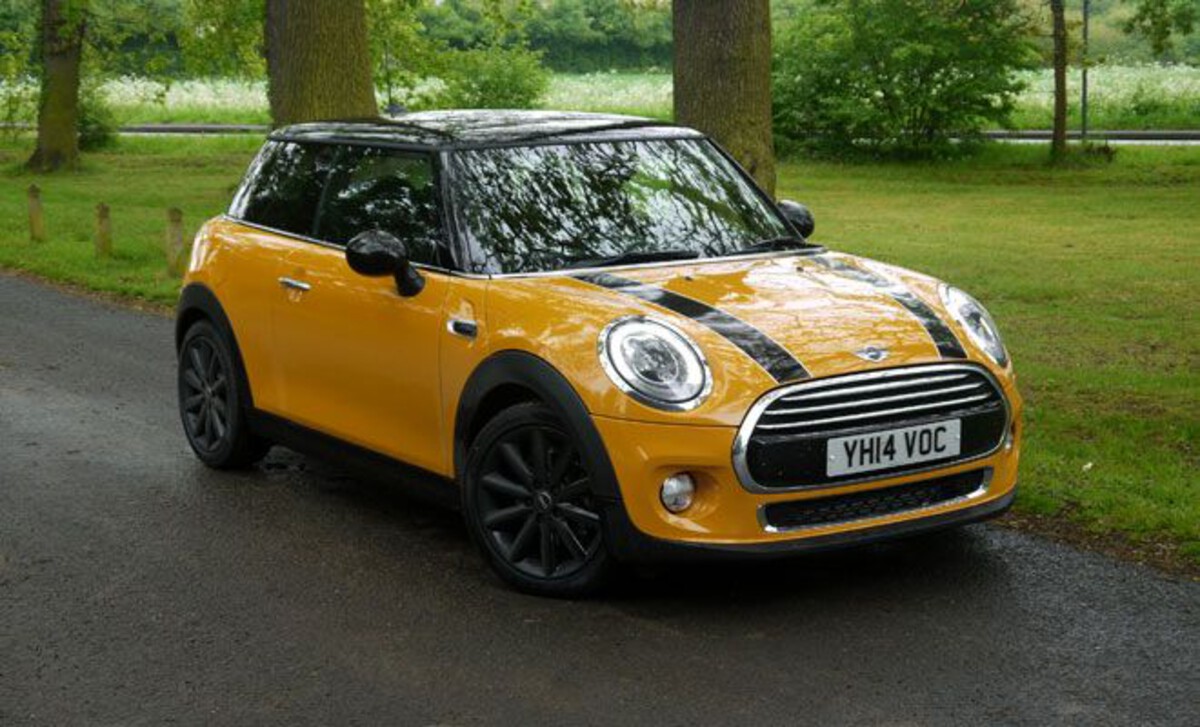
2. Mini Cooper (2007–2015, R56 Generation)
The second-generation Mini Cooper (R56, 2007–2015) is cute, nimble, and full of character—but it’s also a magnet for check engine lights. These cars are known in the automotive world for frequent mechanical and electronic issues that often cause the CEL to light up persistently.
While its BMW DNA gives it some performance appeal, it also inherits many of the same maintenance nightmares as its larger siblings—only squeezed into a tighter, more frustrating package.
First, the timing chain tensioner and guides are notorious weak points in the R56 Cooper’s turbocharged 1.6L engine. The issue became so widespread that it earned the nickname “the death rattle.”
When the timing chain slackens, it causes rattling noises, rough idling, poor performance, and of course, a check engine light. Left unchecked, it can result in catastrophic engine damage. Even after replacement, these components are known to wear quickly again if oil changes aren’t meticulously maintained.
Second, the carbon buildup on intake valves is a chronic issue, especially on direct-injection models. Over time, oil vapors and particulates accumulate on the valves, which aren’t cleaned by fuel spray like in port-injection engines.
This buildup restricts airflow and causes misfires, loss of power, and CELs tied to P0300 and similar codes. Cleaning the valves requires an expensive walnut shell blasting process that owners must repeat every 50,000 miles or so—just to keep the CEL at bay.
The cooling system is also a frequent offender. Thermostat housing leaks, water pump failures, and radiator sensor faults are all common.
Since engine temperature is a critical factor in air-fuel mixture and emissions control, any irregularities in the cooling system can throw off sensor readings and illuminate the CEL. Worse, many of these parts are made of brittle plastic and fail prematurely, compounding the issue.
Adding to the headache is the car’s sensitive ECU and array of interconnected modules. Even something as simple as a loose gas cap can throw a CEL, but so can quirky problems like a failing fuel tank pressure sensor or an evaporative emissions leak. Diagnosing these can be an endless cycle of scanning, repairing, and clearing codes—only to see the light return days later.
Lastly, the Mini’s tight engine bay design means that what should be simple jobs become nightmares. Replacing a single coil pack or sensor might require removing entire sections of the intake or intercooler piping.
This complexity leads to expensive labor costs and increases the chance of creating new problems during routine repairs. For R56 Mini owners, the CEL becomes a near-constant companion—one that never stays away for long.

3. Jeep Grand Cherokee (2011–2016)
The Jeep Grand Cherokee, especially during its fourth-generation WK2 run from 2011 to 2016, is a rugged and capable SUV. However, it’s also a regular offender when it comes to check engine light activity.
Between its array of engine options, electrical inconsistencies, and hit-or-miss build quality, the Grand Cherokee has earned a reputation for being a diagnostics nightmare for both owners and mechanics.
A frequent CEL trigger in these models is related to the Pentastar 3.6L V6 engine, which, despite being widely used across Chrysler vehicles, suffers from chronic issues.
One of the most well-documented problems is the rocker arm failure, where components inside the valvetrain prematurely wear out, leading to misfires and CELs. These are often linked to codes P0300 through P0306 and may also cause ticking noises, rough idle, or loss of power. Repairs can be expensive and may recur if lower-quality replacement parts are used.
Another problem lies in the electronic throttle body (ETB) and related sensor malfunctions. The throttle body often becomes gummed up with carbon, or the sensors begin to report erratically due to poor electrical grounding.
This leads to inconsistent throttle response and codes related to airflow or throttle correlation. When these issues occur, the vehicle may go into limp mode, effectively neutering performance until it’s resolved.
The Transmission Control Module (TCM) and related wiring harnesses are also known for causing CELs, especially in the 8-speed automatic gearbox models.
Poorly shielded wiring or weak solder points in the TCM can cause miscommunications that trigger engine fault codes—even though the engine is running fine. These intermittent codes are hard to replicate and often lead to unnecessary parts replacements in search of a solution.
Furthermore, Jeep’s EVAP system and fuel delivery components are notably fragile in this generation. Vapor canisters, purge valves, and fuel tank pressure sensors frequently malfunction, leading to CELs tied to emissions codes.
These issues don’t typically affect drivability but can be annoying and expensive to track down and fix—especially given that the CEL disables readiness monitors required for emissions testing in many states.
Finally, there’s the issue of build variability. Some Grand Cherokees seem to run flawlessly for years, while others are plagued with issue after issue. This inconsistency is tied to Chrysler’s quality control problems during the era, and it makes ownership a gamble. Unfortunately, that gamble often includes playing CEL roulette on a monthly—or even weekly—basis.
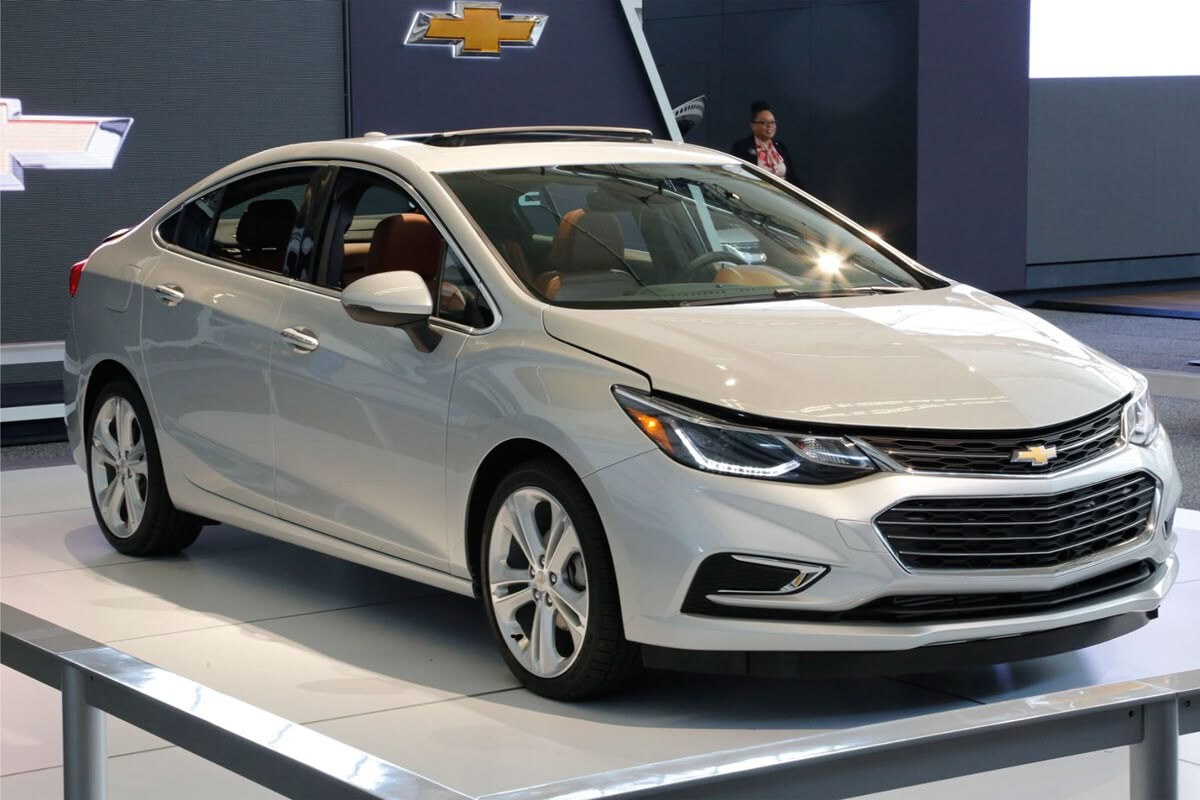
4. Chevrolet Cruze (2011–2016)
The Chevrolet Cruze, especially the first-generation models (2011–2016), was a well-intentioned compact car aimed at competing with global rivals.
Unfortunately, it quickly developed a reputation for being plagued with mechanical gremlins and a dashboard that regularly lights up like a Christmas tree. The check engine light in the Cruze seems almost like a standard feature—something drivers learn to live with rather than solve.
The number one issue tied to CELs in the Cruze is the 1.4L turbocharged Ecotec engine, which suffers from a long list of faults. Among the most infamous is the PCV valve failure.
The valve is built into the valve cover and, when it fails, it often sucks in air at the wrong time, leading to lean conditions, misfires, rough idle, and—you guessed it—a check engine light. Worse still, fixing it often requires replacing the entire valve cover, which itself may fail again later on.
Next, there’s the matter of the coolant system, which is poorly designed and prone to early failure. Leaking water pumps, brittle plastic T-connectors, and faulty thermostat housings are all common.
When these components go, they often lead to overheating or temperature sensor faults, both of which trigger CELs. In many cases, the sensors themselves are accurate—the problem is the Cruze’s fragile parts simply can’t maintain stable engine temps.
The ignition system is another sore spot. Coil packs, spark plugs, and the ignition control module frequently fail, especially around the 60,000-mile mark. When they do, misfire codes pop up regularly, leading to a persistent CEL.
Compounding this issue is that many replacement parts are aftermarket and poorly manufactured, which often results in recurring failures even after a repair.
Furthermore, the Cruze’s emissions system is an endless source of frustration. The EVAP system, in particular, suffers from poorly fitted gas caps, faulty purge valves, and leaky charcoal canisters. Any of these issues can lead to P0440-series codes, which are among the most common reasons for failed emissions inspections—and stubborn CELs that just won’t quit.
Finally, the Cruze suffers from electrical reliability issues in general. From corroded wiring harnesses to glitchy control modules, it’s not uncommon for owners to chase phantom CELs for months.
Diagnosing these can be infuriatingly difficult, even for dealership technicians, and often results in replacing parts on a trial-and-error basis. For Cruze owners, the check engine light is less of a warning and more of a constant.
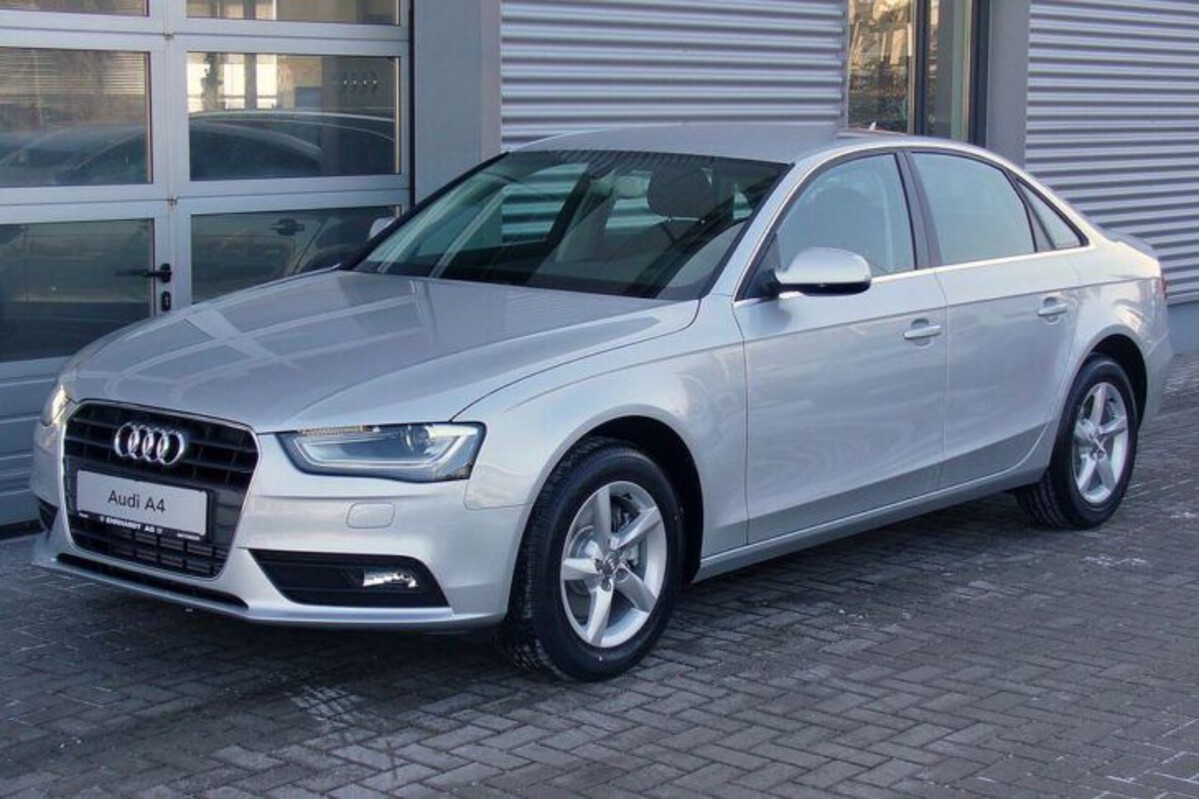
5. Audi A4 (2009–2016, B8 Generation)
The Audi A4 is often admired for its luxurious feel, sharp styling, and solid road presence. But under that polished exterior lies a car that frequently frustrates its owners with check engine lights and costly repairs. The B8 generation (2009–2016) is particularly known for being CEL-prone, especially when it hits middle age and the warranty has long expired.
A major issue in these models is the EA888 2.0T engine, which features direct injection and a turbocharger—two technologies that tend to age poorly without meticulous maintenance.
One notorious CEL cause is excessive oil consumption, often tied to piston ring wear or poor PCV system design. When oil levels drop too low, the engine can misfire, the turbo can suffer damage, and the O2 sensors may begin misreading exhaust gases—triggering cascading engine codes.
Then there’s the timing chain tensioner failure, a silent killer in many early B8 A4s. If not caught in time, the chain can slip or jump teeth, leading to catastrophic engine damage.
Before it gets that far, though, the ECU typically throws timing correlation codes or misfire codes—prompting a CEL. Fixing this issue is expensive, labor-intensive, and absolutely essential for continued operation.
Carbon buildup on intake valves is another routine headache. Because these engines use direct injection, fuel never cleans the intake ports, leading to buildup that restricts airflow and causes poor combustion.
The result is a frequent check engine light for misfires or lean air-fuel mixtures. The only solution is a time-consuming and costly walnut blasting process, which becomes necessary every 50,000–60,000 miles.
The turbocharger diverter valve and wastegate actuator are also common weak points. These components regulate boost pressure, and when they fail—due to diaphragm tears or vacuum leaks—the engine can experience erratic power delivery and set boost deviation codes. These CELs often come with reduced performance and require in-depth diagnostics to pinpoint.
Finally, Audi’s complex network of sensors and modules means that even small voltage drops or software bugs can throw a CEL. The CAN-bus network is especially sensitive, and a single miscommunication between the ECU and a subsystem—such as the MAF sensor, fuel rail sensor, or throttle body—can trigger a code even when the hardware is working fine.
For A4 owners, this means CELs often don’t point to obvious failures but require full-system scans and educated guesswork to resolve.
Also Read: 5 EVs with the Best Charging Port Locations and 5 with the Most Awkward
When the check engine light appears, it’s more than just a visual nuisance—it’s a signal that your car is trying to tell you something. For many drivers, it’s a cause for anxiety, particularly because the light often appears without an immediate or obvious cause.
But after closely examining ten different vehicles—five celebrated for their reliability and five infamous for their unpredictability—it becomes clear that the frequency of CELs isn’t just luck. It’s deeply tied to the engineering philosophy, component quality, and technological complexity of each vehicle.
The five cars that rarely trigger CELs—Toyota Corolla, Honda Civic, Mazda MX-5 Miata, Lexus RX350, and Subaru Outback—share several key traits. They prioritize simplicity over complexity, tested technology over experimental features, and long-term dependability over short-term innovation.
These vehicles often use naturally aspirated engines, streamlined emissions systems, and robust parts that reduce the likelihood of failure or sensor miscommunication. Perhaps most importantly, they’re designed with an understanding that the majority of drivers want consistency, not surprises.
Another significant advantage of these reliable vehicles is their user-friendly maintenance structure. Mechanics understand them. Parts are widely available. And when problems do occur, they tend to be straightforward and affordable to fix.
This predictability creates a virtuous cycle—owners are more likely to maintain the car properly, which further extends its trouble-free lifespan. With these models, the check engine light is a rare visitor, not a permanent tenant.
On the other hand, the five vehicles that constantly throw CELs—BMW 3 Series (E90), Mini Cooper (R56), Jeep Grand Cherokee, Chevrolet Cruze, and Audi A4 (B8)—demonstrate how design ambition, when not backed by robust quality control, can lead to chronic maintenance issues.
Whether it’s due to turbochargers under constant stress, valve timing systems that are too sensitive, or emissions components that are just too fragile, these cars are frequently in conflict with their own sensors. Even when no physical damage exists, these systems often detect variances or inefficiencies and signal them through a CEL.
What’s even more frustrating is that many of these “problematic” cars are otherwise excellent in certain ways. The BMW 3 Series drives like a dream. The Mini Cooper is a joy in tight corners.
The Audi A4 offers luxury that punches well above its price point. And yet, their brilliance is often overshadowed by how often they demand mechanical attention. For every spirited drive or comfortable commute, there’s often a follow-up trip to the shop or a moment of diagnostic dread.
This doesn’t mean these vehicles are inherently bad. In fact, some owners love them despite—or even because of—their quirks. Enthusiasts may be willing to accept a blinking CEL in exchange for a driving experience they can’t find elsewhere. But for the average driver who prioritizes reliability, low cost of ownership, and peace of mind, these models can be burdensome.
In the end, the check engine light is more than just a warning—it’s a reflection of how well (or poorly) a car’s systems are working together. Some manufacturers have mastered that harmony, while others are still playing catch-up.
If you’re in the market for a car and want to avoid the stress and cost associated with frequent CELs, it pays to look beyond horsepower and styling. Focus instead on engineering consistency, historical reliability, and how well a vehicle’s complex components communicate under the hood.
Remember: the best car isn’t always the one that goes the fastest or turns the most heads—it’s often the one that lets you forget it’s even there. That’s the mark of true automotive peace. And in a world where modern vehicles are increasingly complex, that peace is more valuable than ever.

